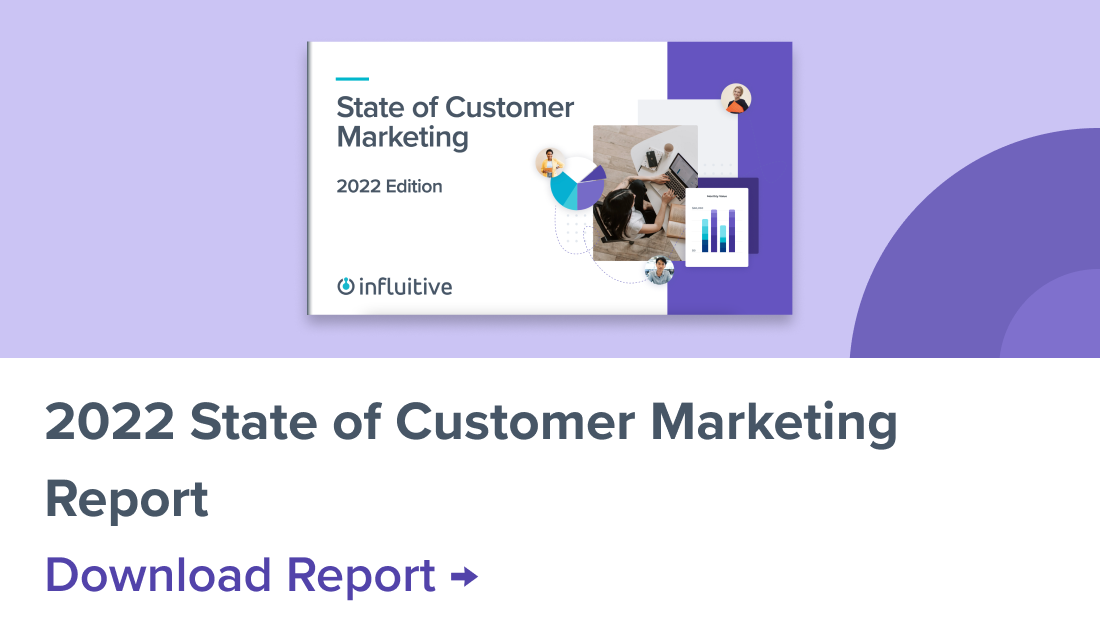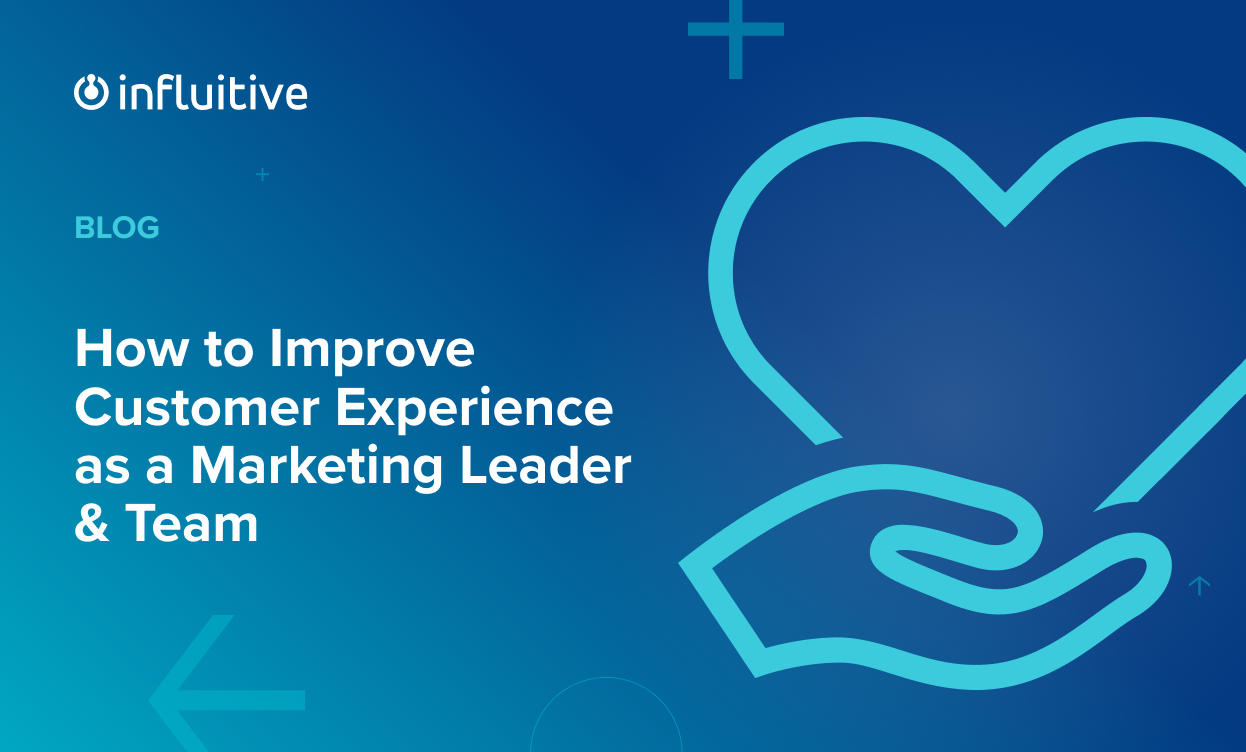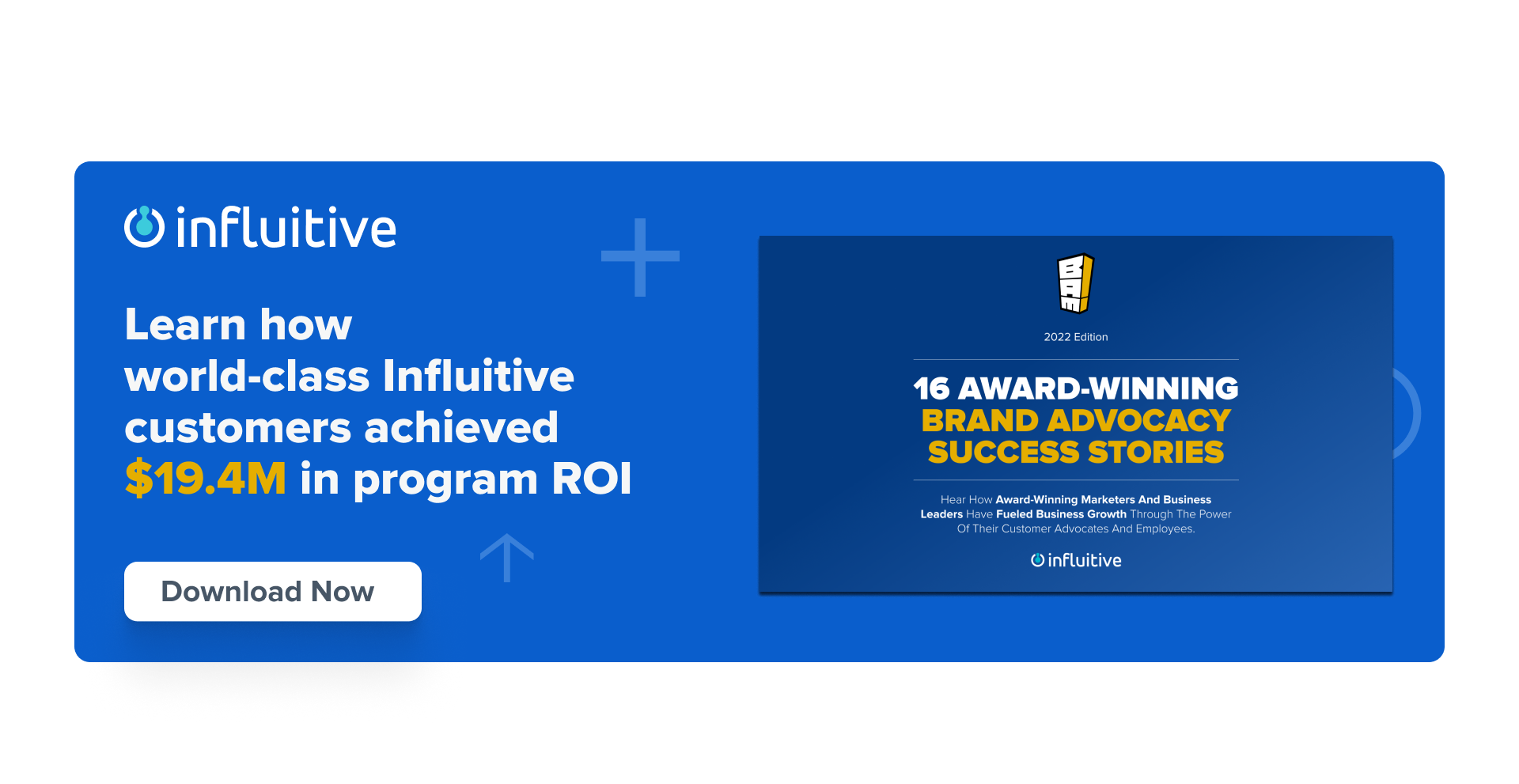One of the key drivers of building a positive brand perception and amplifying brand presence is the customer experience. When customers feel heard, supported, and empowered to thrive, they’ll want to advocate for you. However, improving the customer experience requires an all-hands-on-deck approach from multiple customer-facing teams, like customer success.
But what can marketing leaders do?
It’s no secret that a positive customer experience is directly tied to your department’s ability to support revenue growth. Is it out of your hands? Fortunately, the answer is no! Marketing can improve customer experiences; read on to see how.
What is Customer Experience?

McKinsey defines customer experience (or CX) as “everything an organization does to deliver superior experiences, value, and growth for customers.”
The customer experience starts as soon as the buyer engages your brand as a prospect and continues throughout their customer journey.
CX is key to marketing because engaged and happy customers are more likely to advocate for your brand on social media, provide positive reviews and testimonials, and stay loyal.
In fact, an Oracle CX study found that 77% of executives agree that customer experiences have a direct impact on a customer’s willingness to be a brand advocate. In addition, 76% of business leaders believe that customers have more power today.
We know happy customers directly impact revenue, especially through renewals, up- sells, cross-sells, referrals, and references. When marketing plays a role in improving customer experiences, it helps generate lift across each of those areas.
- 64% of customers are more likely to promote a brand if they like the experience
- 66% of buyers care more about the experience than the price
- 63% of millennial buyers made impulsive purchases due to personalized experiences
Customer Experience vs. Customer Service
‘Customer experience’ and ‘customer service’ are different. Basically, ‘customer service’ is just one aspect of the customer experience. For example, the things you do to make it easy for the buyer to sign up, process payments, and communicate with your team count as service.
But the customer experience is much, much more involved.
The moment a prospect talks to your team, you want that person to feel heard, respected, and empowered. You answer their questions, align with their goals, and give them (and their internal stakeholders) confidence that you will help them achieve their goals.
Once they sign the dotted line, you onboard them to ensure they’re up and running and on track to succeed. You proactively engage them across different channels and touchpoints to ensure they’re achieving their goals and can respond early to problems.
Finally, you go beyond engaging the customer as an account or title. Rather, you engage them as actual people. You work to build a personal connection with the individual and ensure they’re achieving their own personal and professional goals.
Why is Customer Experience Important for Marketing?
The customer experience ties into marketing goals and KPIs both directly and indirectly.
- Customer experience drives over two-thirds of brand loyalty
- 60% of customers will buy again after a personalized purchasing experience
- Customers are 2.4X more likely to stay with a brand when their problems are solved quickly
Right away, you’ll notice that a strong customer experience can support customer advocacy. In turn, a strong customer advocacy presence can help amplify your brand reach on social media and reinforce your brand perception through social proof.
However, enthusiastic and engaged customers can also drive your marketing in other ways.
For example, as an act of advocacy, they can create original content, like blogs, videos, and social media posts. This can be a powerful content marketing machine because it boosts your output through authentic and credible voices.
Customer advocates can also lead key conversations, especially about problems that your brand is trying to solve. Your customers can carry your core message to their audiences and to their network of contacts. This can lead to a potent lead generation pipeline, but without having to rely on costly ads.
How To Improve Customer Experience With Customer Marketing and Advocacy

Customer success (CS), product, and sales each play a frontline role in delivering a good customer experience. However, marketing can also play a key role, especially through customer marketing and advocacy.
1. Build a Customer Journey From Onboarding to Customer Advocacy
Happy customers are your brand’s biggest advocates. It begins with the onboarding process, which sets the tone for your relationship with the customer going forward.
When a customer signs up for your offering, you shouldn’t leave them with little to no help. You must have a strategy for onboarding and making customers feel like they are achieving their goals through your products and services.
Good CX involves customer marketing – building a positive relationship with great customer service for retention and loyalty.
Loyal customers will be eager to share their experiences with others, either personally or on social media, which is essentially customer advocacy.
2. Design a Personalized Customer Onboarding Experience
Show customers that they are not just sources of revenue. You must nurture the relationship from the very beginning—onboarding is a process and not just the first touchpoint between the customer and the brand.
The first step is understanding your audience. Personalization is no longer just about using their first names when sending promotional emails. It’s about tailoring the onboarding experience to their needs.
For online onboarding, a welcome message with onboarding checklists is one way to get important insights into what a customer wants in a product or service. There must also be a step-by-step guide to use your site and resource center.
For offline customers, it’s about one-on-one interactions. The customer service team must be amiable and knowledgeable about the offered products and services. They must be ready to assist with everything the customer needs, from the moment they enter the store until they leave with their purchase.
The personalized customer experience must be consistent and established across multiple touchpoints.
3. Segment Your Customers Into Different Personas
It can be challenging to personalize customer service because there are so many individuals to cover. This is where segmentation comes in.
Separating your customers into groups helps you address their unique needs. Individual customers are usually segmented based on demographics, but for B2B, you also need to account for firmographics.
You can base your segments on the following:
- Industry
- Company size
- Location
- Revenue
- Customer type (B2B, B2C)
- Demographics
- Psychographics
- Technographics
- Behavioral
4. Connect With Your Individual Customers
Make practical use of customer data to improve relationships. Send them an email on their birthday and offer something special like a birthday discount when they shop from your store.
Create a community page where they can share customer feedback and you can make special announcements. Make sure it is a safe space for your customers to interact with each other.
Most importantly, actively engage with customers on social media. When a customer interacts on your page, make sure you respond. Post shoutouts to customers when you see them doing something special—share a featured interview or amplify positive voices.
5. Collect Customer Feedback and Close the Loop
If some customers have gripes or questions about a product or service, ensure quick response times on all your communication platforms. If you cannot provide an immediate answer, at least give a timeframe to get back to the customer. Don’t leave them hanging.
Create a system that collects feedback in real-time and ensures a closed-loop system: the process of receiving feedback from customers, resolving pain points, and responding.
Part of customer experience management is assuring customers that you value their input and will use it to improve your products and services.
6. Align Your Customer-Facing Teams
Strategies for customer experience must be internalized by everyone in the company, especially customer-facing teams. Organize workshops to give them all the knowledge they need to provide top-notch CX.
Another critical element of customer experience management is ensuring that the voice of the customer is heard. Their collective insight can be used to improve your business’s product and service offerings.
7. Listen to Your Employees
Customer-facing teams have a better understanding of what customers want, so take their feedback and insights seriously. Give them a voice in crafting customer experience strategy and use their examples of specific customer interactions to streamline and improve your processes.
8. Set the Right KPIs and Measure ROI
Key Performance Indicators (KPIs) are vital metrics to measure a company’s CX—is it bad? Good? Or just average?
The most common starting point is the Net Promoter Score (NPS), which companies use to determine customer advocacy, or when the customer becomes a spokesperson for the brand.
NPS only asks one question: On a scale of 1 to 10, how likely are you to recommend the brand’s product or service to a friend or colleague?
The scores:
- Detractors – 0-6
- Passives – 7-8
- Promoters – 9-10
The promoters are your most loyal customers. Passives are neutral—you can improve CX to the point that you can turn them into promoters. But detractors are damaging to the brand. They will likely share their negative experiences on social media or with their close friends, family, or colleagues.
NPS is the most basic way you can measure the performance of your customer experience initiatives. You can also use the following metrics:
- Average Resolution Time – the average length of time your support team needs to resolve a customer issue
- Customer Satisfaction Score – a straightforward survey that asks customers how satisfied they are with the brand
- Customer Effort Score – a survey that asks customers how good the brand’s customer engagement is using a rating system of 1 to 7
- Customer Lifetime Value – measures the average amount of money your business gets from a customer over the course of their relationship
- Customer Churn Rate – measures how quickly a customer leaves your brand or clicks away from your website (this metric must be kept as low as possible)
Choose the most appropriate metrics for your type of business, ideally the ones that will best provide concrete data about customer experience.
9. Design for Scale and Growth
Always think big. Whenever you introduce a strategy to improve customer experience, you have to consider sustainability and how it will carry your business forward.
As you scale your business, you will face more challenges regarding CX. You will have to change your tactics because they are not applicable on a larger scale. This is why you must design your CX strategies with an eye to the future.
In the digital age, you must maximize the use of tools and software to help improve customer experience. Again, these tools must be designed for scale. With such capability, it becomes easier to create strategies on how to improve customer experience. You can ensure that everything is aligned with your brand’s goals and vision.
A great way to start is to implement a dedicated customer experience platform with all the tools you need out of the box.














































